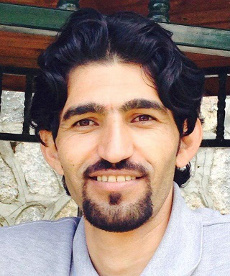Women May Pose the Deepest Threat to Iran’s Regime
An Overlooked Force in Iran
By Anne Applebaum
Tuesday, June 23, 2009
http://www.washingtonpost.com/wp-dyn/content/article/2009/06/22/AR2009062202387_pf.html
Women in sunglasses and headscarves, speaking through megaphones, brandishing cameras, carrying signs: When they first appeared, the photographs of the 2005 Tehran University women’s rights protests were a powerful reminder of the true potential of Iranian women. The images were uplifting; they featured women of many ages; and they went on circulating long after the protests themselves died down. Now they have been replaced by a far more brutal and already infamous set of images: The photographs and video taken this past weekend of a young Iranian woman, allegedly shot by a government sniper, dying on the streets of Tehran.
I don’t know whether the girl in the photographs is destined to become this revolution‘s symbolic martyr, as some are already predicting. I do know, however, that there is a connection between the violence in Iran over the past week and the women’s rights movement that has slowly gained strength in Iran over the past several years.
In the United States, the most America-centric commentators have somberly attributed the strength of recent demonstrations to the election of Barack Obama. Others want to give credit to the democracy rhetoric of the Bush administration. Still others want to call this a “Twitter revolution” or a “Facebook revolution,” as if zippy new technology alone had inspired the protests. But the truth is that the high turnout has been the result of many years of organizational work, carried out by small groups of civil rights activists and above all women’s groups, working largely unnoticed and without much outside help.
Since 2006, the One Million Signatures Campaign has been circulating a petition, online and in print, that calls for an end to laws that discriminate against women and the enactment of laws that provide equal rights for women in marriage, equal rights to divorce, equal inheritance rights and equal testimony rights for men and women in court. Though based outside the country, theAbdorrahman Boroumand Foundation, founded by a pair of sisters, translates and publishes online fundamental human rights documents; it maintains an online database of the names of thousands of victims of the Islamic Republic as well. In the past decade, Iranian women have participated in student strikes as well as teachers’ strikes, and in organizations of Bahai, Christian and other religious groups whose members are deemed “heretics” by the regime.
Not Obama, not Bush and not Twitter, in other words, but years of work and effort lie behind the public display of defiance and, in particular, the number of women on the streets — and their presence matters. Their presence could strike the deepest blow against the regime. For at the heart of the ideology of the Islamic Republic is its claim to divine inspiration: Its leadership is legitimate, as is its harsh repression of women, because God has decreed that it is so. The outright rejection of this creed by tens of thousands of women, not just over the past weekend but over the past decade, has to weaken the Islamic Republic’s claim to invincibility, in Iran and across the Middle East. The regime’s political elite knows this well: It is no accident that the two main challengers to President Mahmoud Ahmadinejad in the Iranian presidential campaign promised to repeal some of the laws that discriminate against women, and it is no accident that the leading challenger, Mir Hossein Mousavi, used his wife, a political scientist and former university chancellor, in his campaign appearances and posters.
The Iranian clerics know that women pose a profound threat to their authority, too: As the activist Ladan Boroumand has written, the regime would not bother to brutally repress dissidents unless it feared them deeply. Nobody would have murdered a peaceful, unarmed young woman in blue jeans — unless her mere presence on the street presented a dire threat.
The regime may succeed. Violence usually succeeds, at least in the short term, in intimidating people. In the long term, however, the links, structures, organizations and groups set up by Iranian women, not to mention the photographs of the past week, will continue to gnaw away at the Iranian regime’s legitimacy — and we should take note. I cannot count how many times I’ve been told in recent years that “women’s issues” in the Islamic world are a secondary subject: Whether the discussion is of the Afghan constitution or the Saudi government, the standard line among most commentators has always been that other things — stability, security, oil — matter more. But regimes that repress the civil and human rights of half their population are inherently unstable. Sooner or later, there has to be a backlash. In Iran, we’re watching one unfold.
 My Interrogator Said: You Are An Ass, And Asses Do Not Merit Human Rights
My Interrogator Said: You Are An Ass, And Asses Do Not Merit Human Rights